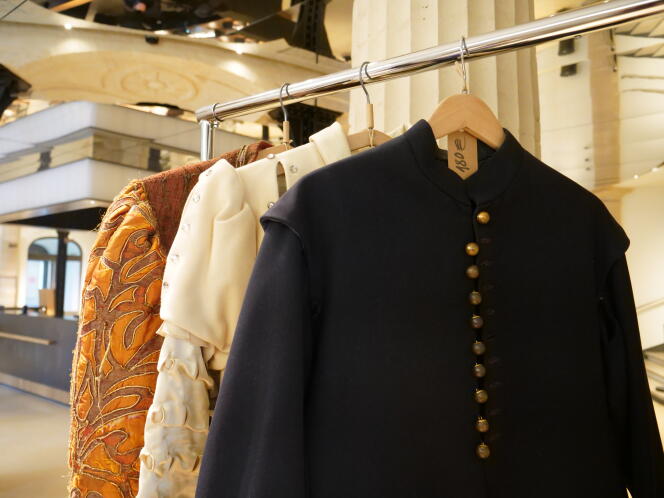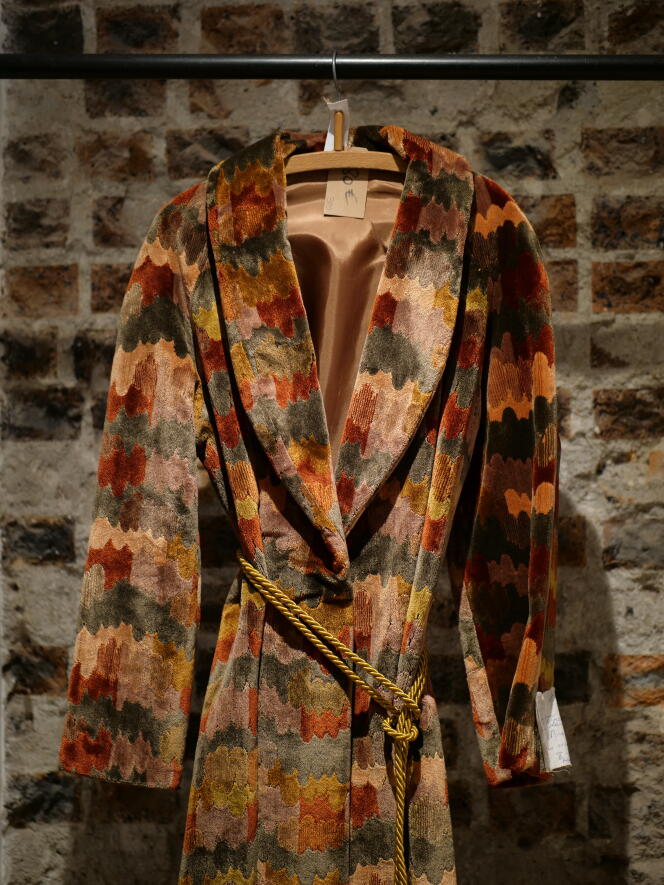


On Thursday, February 1, shortly before noon under the arcades of the Palais-Royal, a small group awaited the opening of the Comédie-Française store. Every week, the institution has put on sale around 30 costumes worn on stage. "We have to make some room," said Martine Villemot, who is in charge of sales, and with good reason: Over 50,000 pieces are kept in the institution's storerooms.
Chain mail, capes, doublets and coats were arranged on three racks between the back of the store and the theater's entrance hall. "We choose costumes that we're sure won't be reused," said Anne Marret, general secretary of the Comédie-Française. "The pattern structure and all manufacturing techniques are archived. We can remake them identically if need be."
A few minutes after opening, the entrance hall was transformed into a fitting room. Edson Dos Santos, 38, a drama teacher from the Paris region, was trying something on in a corner. For a play he's putting on with his students, he wanted to invest in "a colorful jester's costume, like Sganarelle or Scapin." After a conclusive fitting, he left with a burgundy outfit, designed in 1990 for an actor in Molière's Médecin Volant (The Flying Doctor).
Each piece has been made-to-measure. The label attached to the garment indicates the name of the play, the costume designer, the character who wore it and the performance date. Villemot also provides information on the physical measurements of the actor for whom the garment was designed. Sandra, a 52-year-old insurance employee, had just bought a stage costume for her husband: "I'm confident that the size will fit him, as the actor who wore it is stout, and the costume has some room to move."
This Thursday, the wardrobe of Molière's characters was in the spotlight, with a number of garments from Le Bourgeois Gentilhomme (The Middle-Class Gentleman): a chocolate cotton twill coat, short wool crepe tunic and silk velvet leotard. A hanger held a heavy cape worn by an actor playing Hamlet in 1995. The offering also included a few hats and pieces designed for more contemporary stagings, such as a pair of cotton breeches worn in 1974 by a "man of the people" in a performance of Jean Giraudoux's Ondine.

This ephemeral thrift shop attracts theater, history and fashion enthusiasts. Aline Berenguer, 36, a patternmaker at Dior, is a regular at these weekly sales. A fan of costume balls and medieval festivals, she was looking for a garment for an evening out. She had enlisted a few work colleagues in her quest. "Once I've bought them, I touch them up and adjust them to my own measurements," she said. Ronald Fonrose, 43, works in fashion. He wanted an outfit for the Venice Carnival. "You can tell the quality of the outfits right away. They have a vibrancy, a history. They're heavy and precious," he said, running his hand over a rack. Alexey Asantcheeff, a 39-year-old musician, was looking for an outfit for the bassist in his band, "who acts like a powdered marquis."
You have 30% of this article left to read. The rest is for subscribers only.
